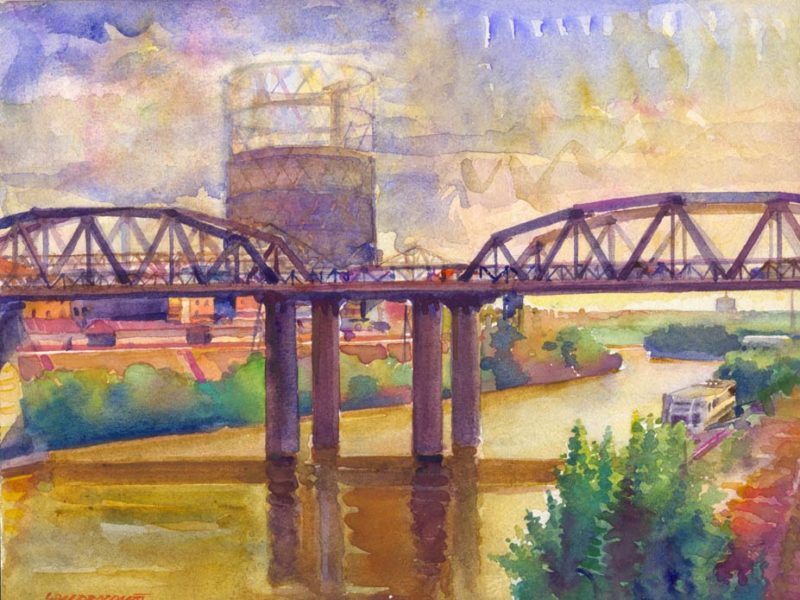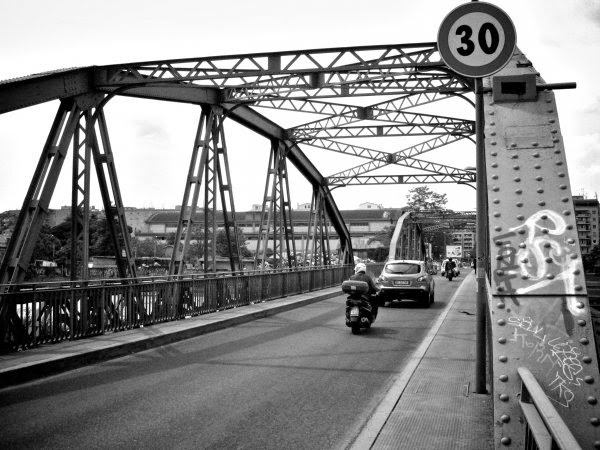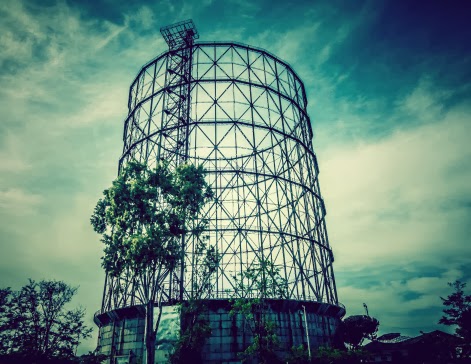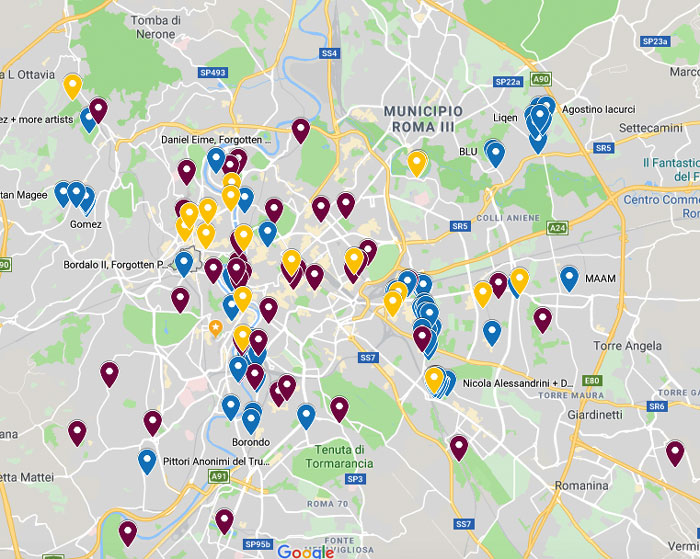The industrial development of this area begun in 1870, when Rome became the capital town of Italy. Thanks to the presence of the river and of the railway Roma – Civitavecchia (connected to Termini by the Ponte di Ferro in 1863), this area was designated to be the industrial area of the new capital. It was -then- rapidly transformed; in 1890 the Mattatoio (slaughterhouse) has been moved here from a more central area of the town, soon followed by many tanneries opening along what we still call “Via delle Conce” (Tanneries Street). At the beginning of the 20th century the industrial development of the area was pushed (and -at the same time- driven) by the construction of the Porto Fluviale (river harbour) followed in 1910 by more industrial buildings such as the Capitaneria di Porto (port authority office), the Dogana (customs) and the Mercati Generali (general markets), a huge complex of pavillions and warehouses now “on its way to reconversion” (i.e. nastily abandoned). On the same year the anglo – roman gas and energy company also moved to what has been called “Italgas area” (still now over-towered by the undisputed symbol of Ostiense neighbourhood: the Gasometro -gas holder); the establishment of the energy company in 1913 brought to the construction of the first public electrical power plant: Centrale Montemartini, which now hosts a great museum.
The heart of this industrial district was represented by the Magazzini Generali (general warehouses), built in 1915 under the supervision of the architect Tullio Passarelli: two couples of huge warehouses from which several metal structures still stick out and beautifully stretch to the river. Abandoned in 1945, they now host the Istituto Sicurezza Antincendi, a.k.a. the Firemen Training Centre, with classrooms, training spaces, cafés, a conference room and company lodgings.
Neither private entrepreneurs weren’t exempt to the commercial appeal of the area! Among those who built here their fabrics there are: Mira Lanza, whose buildings now host the Teatro India (the son of the more central Teatro Argentina, where you can enjoy the “Off-Broadway scene” of Rome), Molini e Panifici Biondi, which was reconverted into the most amazing complex of stylish lofts in Rome (therefore affordable only by several famous Italian actors currently living there), the Società Anonima Lavanderia Roma, whose building now hosts the Literature Faculty of Roma Tre University and the Vetrerie Riunite Bordoni, now hosting the office of Roma Tre University’s Chancellor.
Ostiense Neighborhood Rome > PONTE DELL’INDUSTRIA
or, as we all call it, PONTE DI FERRO (Iron Bridge) connects via del Porto Fluviale with via Antonio Pacinotti and with its industrial charme it surely is one of the most wonderful bridges in Rome. Wanted by Pope Pio IX to connect the new Termini station with the railway Roma-Civitavecchia, it has been realized by a Belgian company between 1862 and 1863 and initially it was raising from the middle to allow the passage of freighters along the river, but in 1911 it was partially reshaped and nowadays it’s still meant for cars and pedestrians instead of trains. Under this bridge, on the right bank of the river there is one of the few cycling lanes of Rome, while on the other side during the summer there is a live music/cinema/theatre manifestation.
Ostiense Neighborhood Rome > GASOMETRO (gas holder)
or “Modern Colosseum” as we call it, is now abandoned. Actually there are 3 of them: two smaller built in 1910 and the biggest (92 meters high!), popular one built in 1937. It was used to collect the “gas for the city” (a particular gas mixture serving both domestic usage and town illumination), which during ’60s was replaced by methane and therefore those buildings became useless. This extremely romantic industrial coliseum is made by 1551 iron poles and it is 63 meters in diameter!
Ostiense Neighborhood Rome > EX-MATTATOIO (former slaughterhouse)
This vast, beautiful complex of wings and pavillions covers an area of 25.000 sqm in the heart of Testaccio neighborhood. Designed in 1888 by Gioacchino Ersoch, it was destined to the slaughter and to the distribution of meat until 1975, when it was abandoned. Now it hosts a policemen office, the Architecture Faculty of Roma Tre University, the contemporary art museum MACRO Testaccio (the son of MACRO in via Nizza) and La Pelandra, another important contemporary art venue. Within its warehouses is born the popular gay party “Muccassassina” (hence the name “Killer Cow”), as well as from 2002 the summer manifestation “Gay Village”, even if both parties moved to different locations. From 2007 in this space there is also the Città dell’Altra Economia (town of a different economy), a project devoted to themes such as fair trade, organic and biological food, recycling, renewable energies and more. Overall the former slaughterhouse has been transformed into a great and variegated cultural space inside a beautiful industrial venue, but the potential of this area is way higher than this fragmented and sometimes sleepy scenario; let’s hope it will get more dynamic soon!
Find these (and many more) cool spots in my Rome Google Map!



